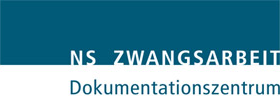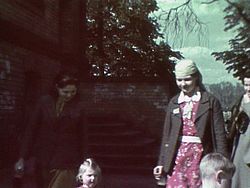Who were the forced laborers?
Nobody could live in Germany during the Nazi era without encountering them at every turn: Forced labourers from all over Europe were omnipresent.
About 26 million people involuntarily worked for the Nazi state in the German Reich and the occupied territories. These included prisoners of war, concentration camp prisoners, Jews, Roma and Sinti. The largest group, however, were the approximately 8.4 million civilian workers who were deported to the Reich - men, women and children from the occupied territories of Europe. Their fate is the focus of the permanent exhibition.
Forced laborers equal forced laborers?
In a total of 30,000 camps, the abducted people worked under the harshest conditions. Their everyday lives were marked by racism. Western Europeans were considered to be related to the German "master race" and were treated better than Eastern Europeans. The French, Belgians and Dutch were therefore subjected to the least harassment. The Czechs and Serbs had already suffered much worse. Poles were even lower in the racist hierarchy. The lowest level was made up of people from the Soviet Union, the so-called "Eastern workers". According to Nazi ideology, they were considered inferior.
Where were they deployed?
In particular, the German war economy would not have been sustainable without the mass deployment of forced laborers. But in the end all areas of society profited from it. Above all industry and agriculture, but also medium-sized enterprises, crafts enterprises, municipalities, churches and even private households resorted to the cheap labour of the Nazi dictatorship.
GBI camp 75/76 - Schöneweide
The Documentation Centre for NS Forced Labor is located at the historical site of the almost completely preserved former forced labor camp GBI 75/76. Since 2006, it has made visible the long hidden fate of over 26 million men, women and children who were exploited as forced laborers by the NS regime during the Second World War.


![[Translate to englisch:] ID card of the transformer plant Oberspree (TRO), Berlin-Oberschöneweide, 1942](https://www.ns-zwangsarbeit.de/fileadmin/_processed_/2/5/csm_Arbeitsausweis_AEG_63ac4cd266.jpg)